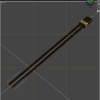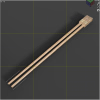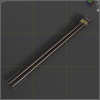Pr0GamerJohnny
Devoted Member
- Sep 7, 2022
- 9,095
- 14,437
- 812
This scene does a much better job of showing what a big issue this is, and how off the lighting is:
The light is pointed exactly at the hallway split at 0,0 and each figure is the same distance from that interface, meaning the 2 figures should have comparable illumination.
Seems like either this is a fundamental problem in daz....or there's some special shader property mirrors need to transmit light.
You don't have permission to view the spoiler content.
Log in or register now.
You don't have permission to view the spoiler content.
Log in or register now.
Seems like either this is a fundamental problem in daz....or there's some special shader property mirrors need to transmit light.
Last edited:








